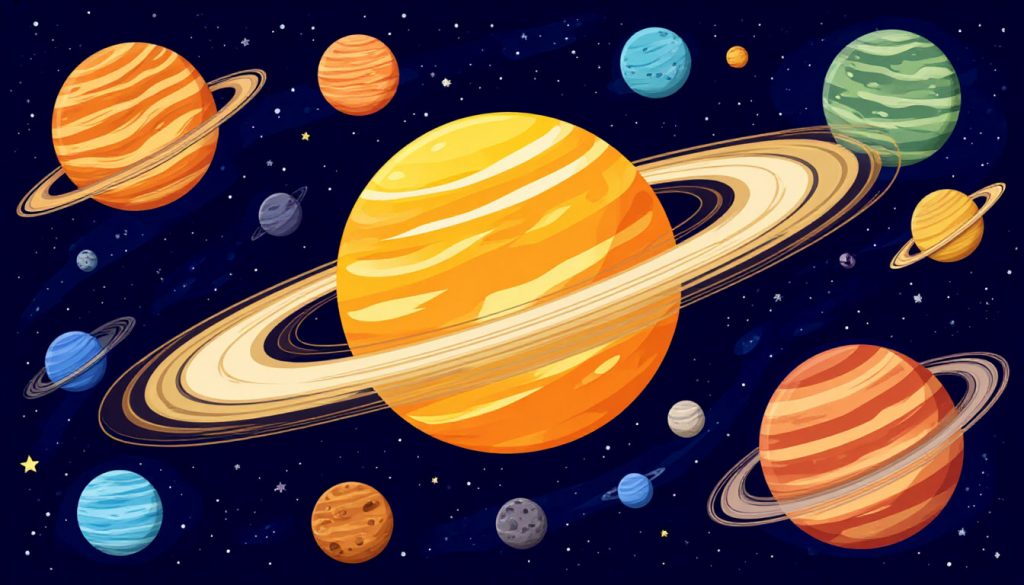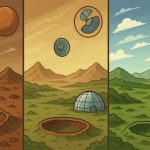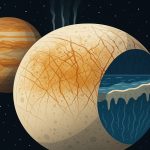The Solar System is home to eight diverse planets, each with its own unique structure, atmosphere, surface features, and orbit. From the scorched plains of Mercury to the icy winds of Neptune, the planets reveal the complexity and variety of planetary science. This article explores the defining characteristics of each planet, grouped into terrestrial and gas/ice giant categories.
The Terrestrial Planets
These are the four inner planets, closest to the Sun. They are small, rocky, and have solid surfaces.
1. Mercury
- Closest to the Sun (average 58 million km)
- No atmosphere to retain heat — temperatures swing from +430°C to -180°C
- Surface is covered in impact craters, like Earth’s Moon
- No moons, no rings
- Rotates slowly: one day lasts 59 Earth days
2. Venus
- Thick atmosphere composed mostly of CO₂, causing a powerful greenhouse effect
- Surface temperature reaches 465°C, hotter than Mercury
- Covered with volcanoes and lava plains
- Rotates backward (retrograde) and very slowly: a Venusian day is longer than its year
- No moons
3. Earth
- The only known planet with liquid water on the surface and life
- Atmosphere supports life and protects from harmful radiation
- Features diverse climates, continents, oceans, and tectonic activity
- One natural satellite: the Moon
4. Mars
- Known as the Red Planet due to iron oxide on the surface
- Has polar ice caps, canyons, dust storms, and extinct volcanoes (Olympus Mons is the largest in the Solar System)
- Atmosphere is thin and composed mostly of CO₂
- Two small moons: Phobos and Deimos
- Target for future human exploration and colonization
The Gas and Ice Giants
These four outer planets are large, lack solid surfaces, and have ring systems and many moons.
5. Jupiter
- Largest planet in the Solar System
- Made mostly of hydrogen and helium
- Famous for the Great Red Spot, a giant storm
- Has at least 95 moons, including Ganymede (the largest moon in the Solar System)
- Emits more heat than it receives from the Sun
- Faint ring system
6. Saturn
- Known for its spectacular ring system made of ice and rock
- Composed mainly of hydrogen and helium
- Has at least 146 moons, including Titan, which has a thick atmosphere and methane lakes
- Lower density than water — it would float if there were a bathtub big enough
7. Uranus
- An ice giant, rich in water, ammonia, and methane ices
- Pale blue color due to methane gas in the atmosphere
- Rotates on its side, possibly due to a massive impact
- Has at least 27 moons and a faint ring system
- Coldest atmosphere among the planets (down to –224°C)
8. Neptune
- Farthest planet from the Sun (average 4.5 billion km)
- Deep blue color and fastest winds in the Solar System (up to 2,100 km/h)
- Similar composition to Uranus
- At least 14 moons, including Triton, which orbits backward and may be a captured object
- Has dark storm systems like Jupiter’s
Summary Table of Key Features
| Planet | Surface | Atmosphere | Moons | Rings | Notable Feature |
|---|---|---|---|---|---|
| Mercury | Rocky | None | 0 | No | Temperature extremes |
| Venus | Rocky | Thick CO₂ | 0 | No | Hottest surface |
| Earth | Rocky | Oxygen-rich | 1 | No | Supports life |
| Mars | Rocky | Thin CO₂ | 2 | No | Tallest volcano, dust storms |
| Jupiter | Gas | Hydrogen/Helium | 95+ | Yes | Largest planet, Great Red Spot |
| Saturn | Gas | Hydrogen/Helium | 140+ | Yes | Bright ring system |
| Uranus | Ice | Methane-rich | 27+ | Yes | Rotates on its side |
| Neptune | Ice | Methane-rich | 14+ | Yes | Fastest winds, dark storms |
Conclusion
Each planet in the Solar System offers a unique story about the formation and evolution of planetary bodies. While Earth remains our only home, continued exploration of other planets — particularly Mars, Jupiter’s moons, and Titan — may one day answer deeper questions about the origins of life and the future of human exploration.
Glossary
- Greenhouse effect – trapping of heat by gases in a planet’s atmosphere
- Retrograde rotation – spinning in the opposite direction of most planets
- Ice giant – a planet composed mostly of elements heavier than hydrogen and helium
- Tectonic activity – movement of a planet’s crust, creating mountains, earthquakes, etc.
- Atmosphere – a layer of gases surrounding a planet


